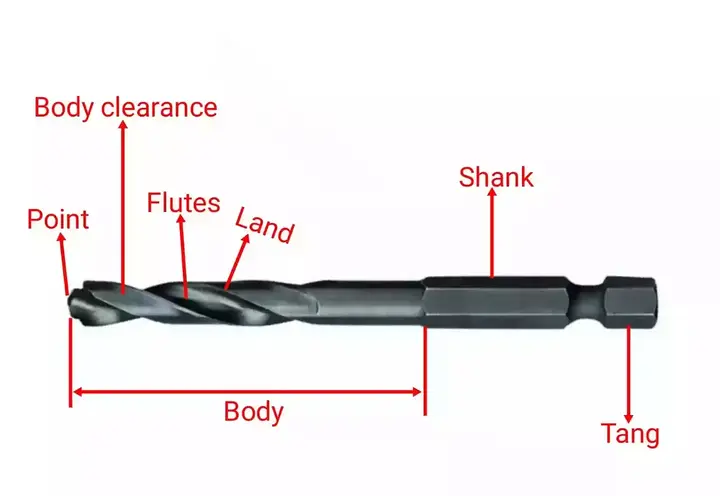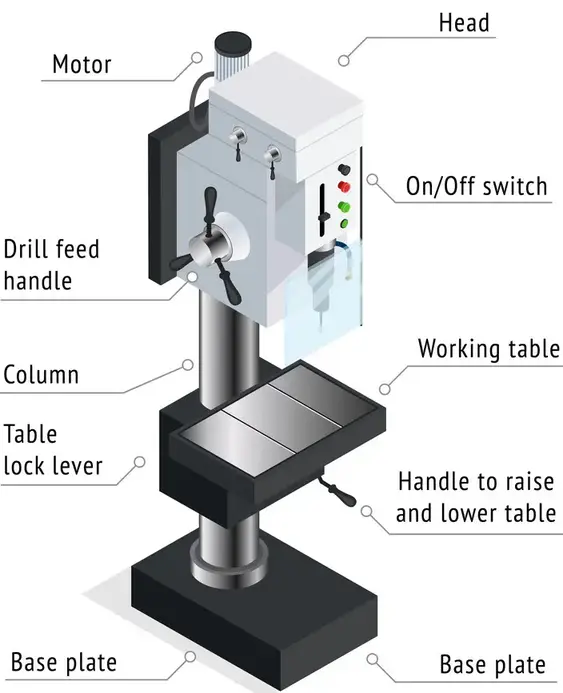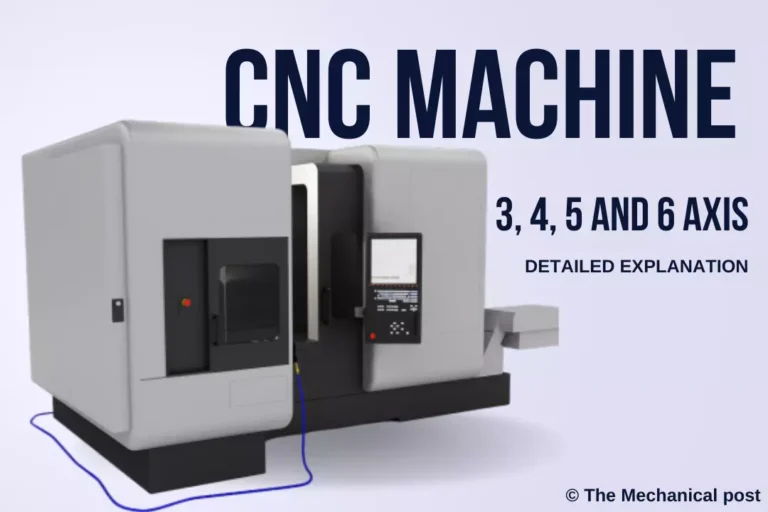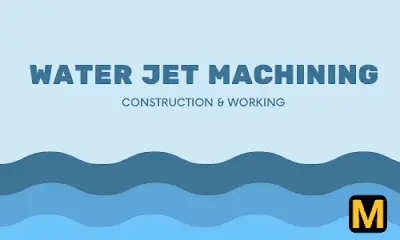What is a Drilling machine? definition, types of drilling machines, and operations
The drilling process is simple itself. Probably the most straightforward technique of subtractive machining (SM). But every expert engineer knows how many pitfalls may appear in the process. The way to avoid them — immerse yourself in the topic in such great detail as possible.
Here is a most thoughtful explanation of every single aspect of the Drilling operation, types of drilling machines, and much more.
What is Drilling?
Drilling is a subtractive machining process that is used for producing round holes with the help of a rotary cutting tool.

And now, let’s elaborate a bit. Drilling is considered to be one of the key methods of subtractive machining. It is performed by cutting off material from a workpiece (in contrast to additive machining AM processes like 3D printing). The process involves using a rotating cutting tool (commonly known as a drill bit) to produce round holes in a stationary workpiece.
A drill bit is usually made of high-speed steel (HSS). It has a “spiral” (or helical flutes) that allow the easy outflow of the chips of material produced during the drilling operation. The sharp edges perform cutting once accelerated to hundreds of revolutions per minute by a drilling machine.
The produced holes are either made for the accommodation of screws or bolts for assembly or aesthetic purposes. Holes can be enlarged, and their inner surfaces can be finished for better smoothness and appearance.
See an example of drilling and a drill bit in the images below.

Drilling Machine Definition
A Drilling machine is a machine that is used to drill holes mostly of circular cross-sections and similar tasks related to it like boring, reaming, etc.
In drilling machines, the hole is made by the spinning edge of a cutting tool called the drill bit. The hole is drilled by applying shear force on the workpiece to remove the material in the form of chips.

Types of Operations Performed on Drilling Machines
The drilling itself is not the only manufacturing process that can be executed on a CNC drill. Depending on the type of the machine, 8 types of operations can be possibly supported:
- Drilling. With this operation, you are familiarized already. It’s the production of simple, round holes only. It supports moderate to extra high production speed.
- Reaming. This process serves for the production of very accurate holes. Reaming involves widening the opening of the already drilled hole. The end result is a perfectly circular hole of the exact diameter. Reaming is considered a finishing process executed with the use of a multi-edged tool. It supports low to moderate production speed.
- Boring. It is also the enlarging of the existing hole but is not considered to be a finishing process. It involves using a single-point cutter – boring bar of a larger diameter than a previously drilled hole. Boring may increase the diameter of the hole but not its depth. It also may be used to convert a cylindrical hole into a tapered hole. Boring supports moderate to high production speed.
- Counter boring. Is the enlarging of the end of an existing hole. The purpose is to accommodate bolts, studs, and pins. So, it’s much like the boring buy executed across a portion of a hole’s depth. It supports low to moderate production speed.
- Countersinking. It is another process that serves for creating space for the head of a bolt or a screw. It’s executed over metal objects in order to cut a conical hole. Countersinking may also be used to clean away burrs from drilling or tapping. It’s a good practice to prevent corrosion and ensure a tight seal. It supports low to moderate production speed.
- Spot facing. This operation is simply facing a location of a workpiece to give it a smooth, flat finish. This is useful for the creation of a good seat for a nut or the head of a cap screw. Normally, spot facing is executed over castings and forgings. It supports low to high production speed.
- Tapping. It is the process of cutting an internal thread and inserting screws, bolts, and other thread fittings into internal holes and treads. It uses a cutting tool called a tap. It is a cylindrical or conical-cutting tool that can be designed in the desired form. It supports low to moderate production speed.
- Trepanning. This is a fairly rare technique intended for through-hole applications. The cutter removes material at the periphery forming a ring this way. The core is left in the center of the hole (see the example in the image below).
The method is used to produce large-hole diameters, whereas machine power is not enough. It supports low production speed.

Florian Schott, CC BY-SA 4.0, via Wikimedia Commons
Types of Drilling Machines
Probably the most exciting thing about drilling is the units that do the trick themselves. There are several that suit slightly different manufacturing approaches. Some of them can be either automated or manual. Others used for industrial purposes are only computer-controlled, such as PCB manufacturing.
It’s essential to mention that in mass production, there are expensive CNC machining centers that do drilling and other types of work. Such machinery is purposely designed to handle the work of all the types detailed below and more.
Some $200,000 CNC units probably can handle most drilling work better than any other machinery. But making them produce a couple of small holes in a lightweight component is like using a steam hammer to crack nuts.
- Sensitive drilling machine.
This one is designed specifically for drilling extremely small holes at high speeds. They are used for precise and light types of jobs. Their bases are mounted on a bench or on the floor firmly with bolts and nuts. It can handle drill bits with a diameter of up to 15.5. The supported rotating speed normally ranges from 50 to 2000 revolutions per minute (RPM).
The uniqueness of this unit is that its driving mechanism can be controlled by hand. A skilled machinist can do an accurate job using this fairly prevalent machine unit.
- Upright drilling machine.
This unit is designed for handling medium-duty drilling work. It looks much like a sensitive drill, but it’s way large and heavier. It can employ drill bits with a diameter of up to 50 mm.
This equipment unit can be used in a manual or semi-automatic mode. The operator can power feed the tool into a workpiece. For this purpose, some upright drills are equipped with table-raising mechanisms.
- Radial drilling machine.
This machine is designed for handling medium to large and heavy workpieces. Its round column is mounted on a large base. The radial arm can be raised and lowered to enable it to accommodate workpieces of varying heights. The arm can be swung to any position, with the drill head sliding on the arm.
A radial drilling machine is not directed by hand normally. The worker controls the motor, and the drill penetrates the workpieces passing by on the manufacturing line.
- Gang drilling machine.
This one has a common table and a base. The uniqueness of the machine is that it has multiple drill heads. Typically four to six ones. Those are placed side to side. Each has a separate driving motor so they all drill a workpiece at different rates producing multiple holes simultaneously.
Besides, this machine can perform multiple a series of other operations such as reaming, boring, and tapping. Each spindle can be equipped with distinct tools. Such units are never for manual usage. Drill CNC centers, not necessarily, but may be constructed as modifications of gang drilling machines.
- Multiple spindle drilling machine.
This unit is an advanced version of the gang drilling machine that incorporates several spindles instead of a bench of drill heads. It’s used to reproduce the patterns of holes in a number of identical workpieces.
The spindles are powered by a single motor with a set of gears driving every spindle. It makes all the drills fed into the workpiece at the same time. What’s possible here to alter is the distance between the spindles along the X and Y axes (normally). Drill jigs are used to guide the cutters.
- Deep hole drilling machine.
This highly-specialized machine is used to drill deeper holes in connecting rods, barrels of guns, and other components. The deep hole drilling machine takes full advantage of high cutting speeds and lowers feed rates to fulfill its purpose.
The working principle is that a non-rotating drill is fed slowly into the rotating at high speeds drill. Coolant is supplied constantly to prevent both the material and the tool from overheating. Such machines also hardly can be directed manually/ They are other semi-automated or CNC.
- CNC drilling machine.
A CNC drill machine is a computer-controlled equipment unit used in the industrial setting to perform drilling operations with the use of rotary cutters.
Such drilling centers are fully-automated pieces of machinery that do not require labor involvement but setting a workpiece and changing tooling. They have integrated software allowing them to read CAM files with instructions.
A CNC drill can move the tool-holding device in 3 dimensions (some machines have 4 or 5 axes). But regardless of the direction, a drill bit must enter the workpiece at the right angle. The tool holding parts are the spindle itself (conventional option, common for other CNC units as well), sleeve, socket, chuck, and a tapping attachment.
A CNC drill is a complex equipment unit, but probably, its main parts are self-explanatory enough. See them in the image below.

And let’s polish the understanding of the overall process from start to finish. Here is the step-by-step procedure of CNC drilling:
- Creating CAD design. It involves creating a 2D or 3D model in computer software.
- Converting the design into a CAM file. It is a document written in G-code machining language for a CNC drill to read it.
- Loading the instruction in the CNC drill. Basically, entering those instructions and making sure that they are read and executed correctly.
- Setting up the CNC drill. It involves choosing appropriate sets of drill bits and setting/ fixating the machine.
- Executing the drilling operation. This part is performed by the drill alone after the initiation of the procedure by a machinist.
- Evaluating the component. Performing manual and automatic QA checks to ensure the success of the drilling procedure executed.
And now, let’s move to a review of the drilling machine.
Advantages and Limitations of Drilling Machines
As industrial equipment, drills come with some technicalities to consider. Aspects in which you can rely on every drilling machine are the following:
- Accurate points. These units can ensure superior accurateness all by themselves. They achieve it with step-by-step processing of holes with drill bits, boring bars, and reamers.
- Good feed control. Surprisingly, even manual drilling is considered precise machining. CNC units go a step further, respectively.
- A good choice of drilling options. The vast array of available drilling units allows for selecting between precise, deep, simultaneous, pattern, and other types of drilling. As an extra bonus, all of those can be performed having a couple of solid machine centers only.Yet, these units have limitations to consider. These are linked to specific occasions when it’s impossible to produce a smooth, accurate hole with a good degree of consistency.
- Wellbore stability. Borehole collapse — shear-type wellbore failure because of tock stresses is a gigantic issue to consider. It derives from multiple factors, including wrong trajectory, inadequate drilling fluids, etc.
- The limited trajectory of drilling. Normally, drill machines are intended to cut at a right angle. Any deviations almost instantly result in hole failure. It somewhat limits the range of possible designs.
In any case, drilling machines are irreplaceable. If approached wisely, they offer superior production quality and a range of manufacturing techniques no other piece of machinery can offer.
Summary
In essence, drilling is much more than producing smooth holes only. It concerns such aspects as the production of precise threads or heavy-duty jobs, accommodation of bolts and screws, making good inner finishes, and more.
Drill machines can be manual, semi-automated, or CNC ones. Nowadays, large manufacturers use machine centers that do all the 8 drilling processes and more. The only aspects to consider for high-quality drilling are trajectory and appropriate drilling fluids usage.





![37 Must Have Workshop Tools & Their Uses with [PDF & Images]](https://mechanicalpost.site/wp-content/uploads/2023/07/tool-stoarge.webp)
![What is Industrial Automation and its Types? [with PDF]](https://mechanicalpost.site/wp-content/uploads/2021/10/What-is-Industrial-Automation-ad-its-types.webp)

